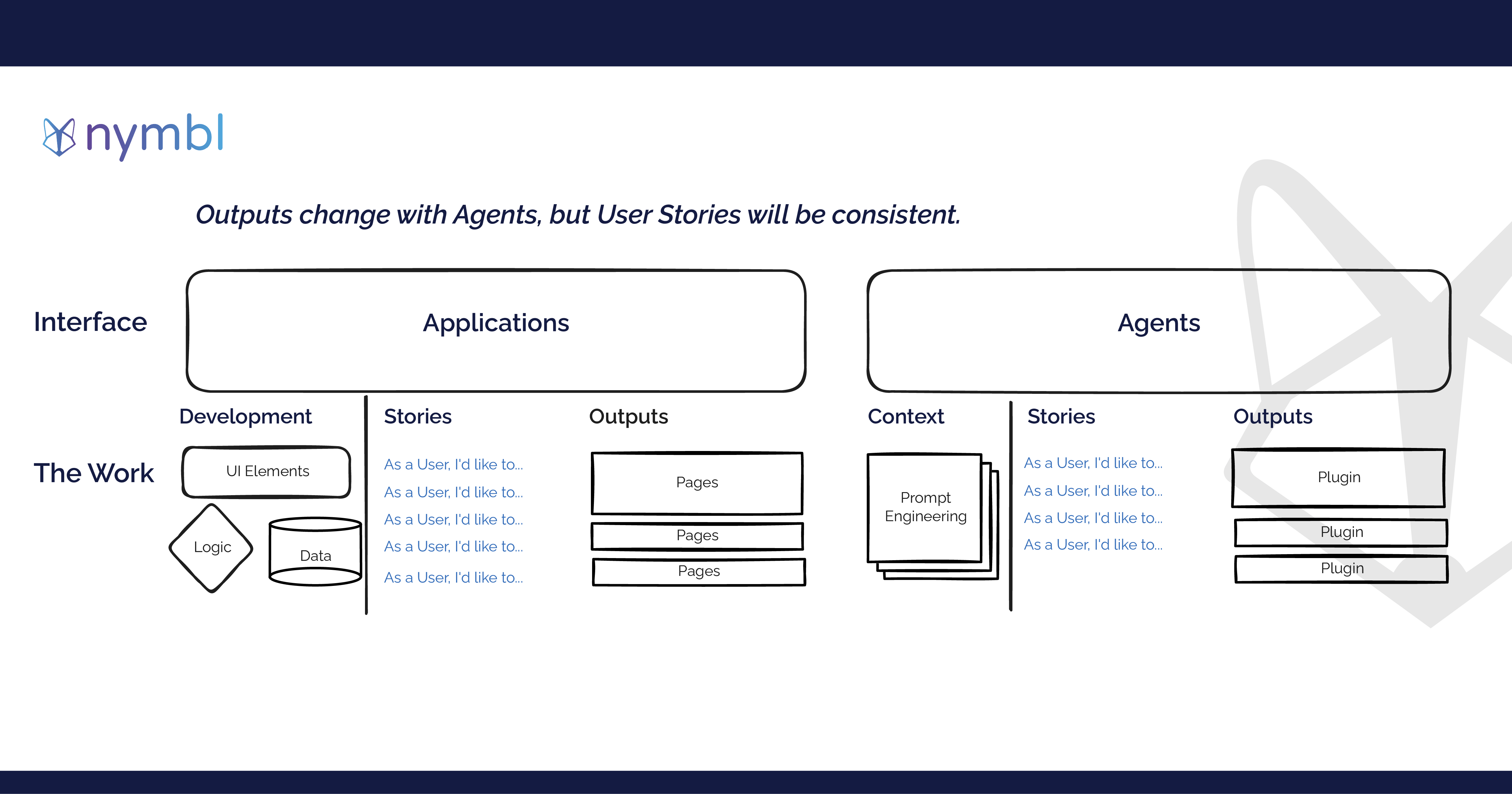Designing Enterprise Software in the Age of AI
As we move deeper into the age of AI, software development is not just evolving—it’s being reshaped. The integration of artificial intelligence, including large language models like ChatGPT, is redefining how enterprise applications are designed, developed, and deployed. From startups to global enterprises, we’re seeing a shift in priorities, toolsets, and skill sets across the board.
At Nymbl, we’re on the front lines of this transformation. Whether modernizing legacy systems or partnering with innovative startups, we help organizations rethink how digital capability is represented, delivered, and governed through AI-powered software engineering initiatives.
From Traditional Apps to Intelligent Systems
Historically, programmers defined applications through user interfaces, workflows, and APIs. But in today’s development process—driven by generative AI and real-time intelligence—these building blocks are no longer sufficient on their own.
Now, intelligent systems are based on:
- Prompts, defining intent and guiding automation
- Context, managing constraints and current state
- AI agents, acting autonomously on behalf of users or backend systems
- Systems of record and APIs, preserving truth and structure within the broader ecosystem

This approach introduces new challenges and opportunities for solving complex problems. Tools like GitHub Copilot and AI-assisted IDEs (integrated development environments) accelerate productivity, while prompt engineering is becoming a critical discipline for modern development teams.
Visualizing Agent-Based Architectures
To ensure alignment between technical and non-technical stakeholders, we use a deliberately simple visual language:
- Each agent is visualized as a circle
- Each system, API, or data source is a cylinder
- Arrows map read, write, or bidirectional interactions

This model helps define what each agent is responsible for, how it interacts with systems, and what outcomes it supports. It’s a way to make AI systems explainable—even to teams unfamiliar with writing code—while still focusing on user needs and enterprise outcomes.
Designing for Guardrails and User Experience
AI introduces new variables, but core software design principles still apply—especially when designing for scalability, performance, and user experience.
When building AI-driven systems, we define:
- The user stories and use cases the agent supports
- The prompts and utterances it will recognize
- The type of system or API access it needs
- The metrics used to measure success and effectiveness

The goal is not just capability, but responsible behavior. From debugging to real-time validation, we apply familiar principles to unfamiliar territory—bridging traditional frameworks with new-gen adaptability.
A Unified Path Forward
Even as AI tools like ChatGPT redefine short-term workflows, long-term software success still hinges on thoughtful design, continuous testing, and alignment with human creativity and enterprise goals.
While the execution mechanisms are changing—from IDEs to agents and from manual code to automated code generation—the fundamentals persist. Great software still starts with clear requirements, user-centered design, and iterative refinement.
Closing Thought
AI is not replacing developers—it’s reshaping how they work. Programmers today are designing intelligent agents, crafting prompts, orchestrating APIs, and optimizing for outcomes, not just functionality. At Nymbl, we’re building the tools, methods, and mental models to support this next chapter—helping teams move from application thinking to agent thinking while keeping user needs, enterprise goals, and human creativity at the center.
Whether you're tuning in to a podcast on AI strategy or deploying your first intelligent chatbot, the future of enterprise software is here—and it's built on a foundation of adaptability, real-time intelligence, and collaborative problem-solving.









.png)